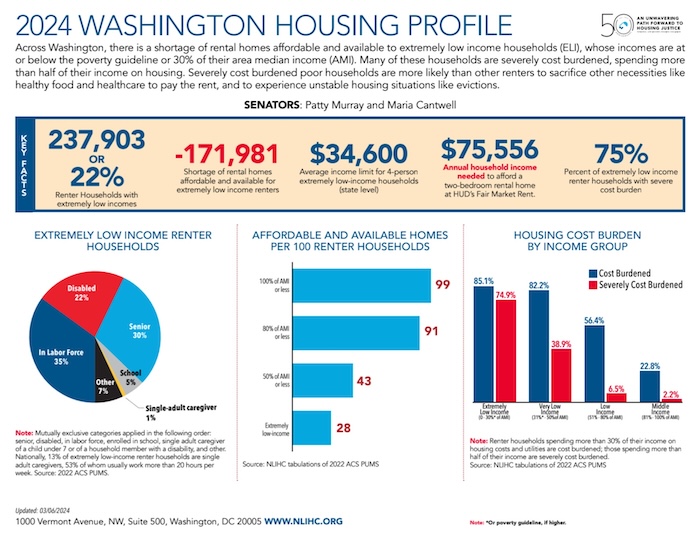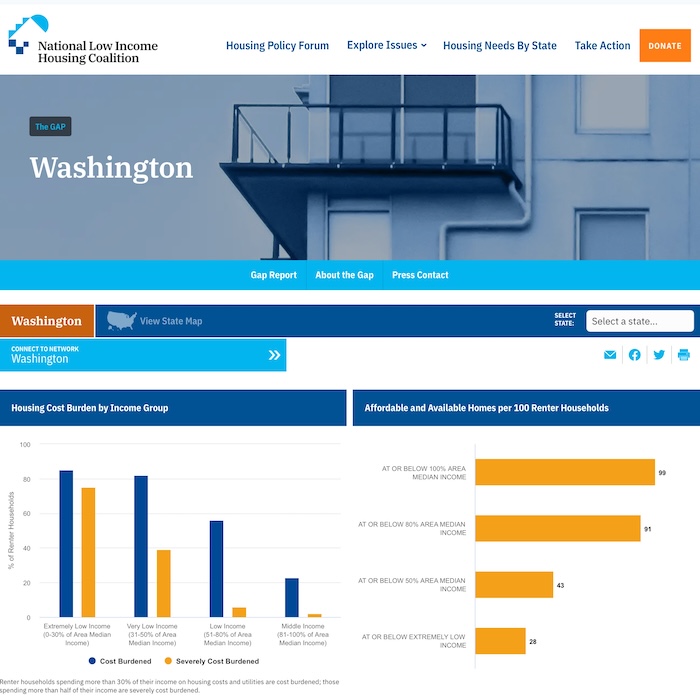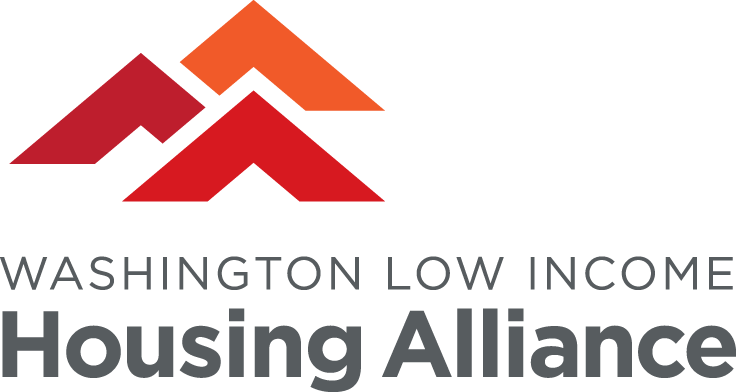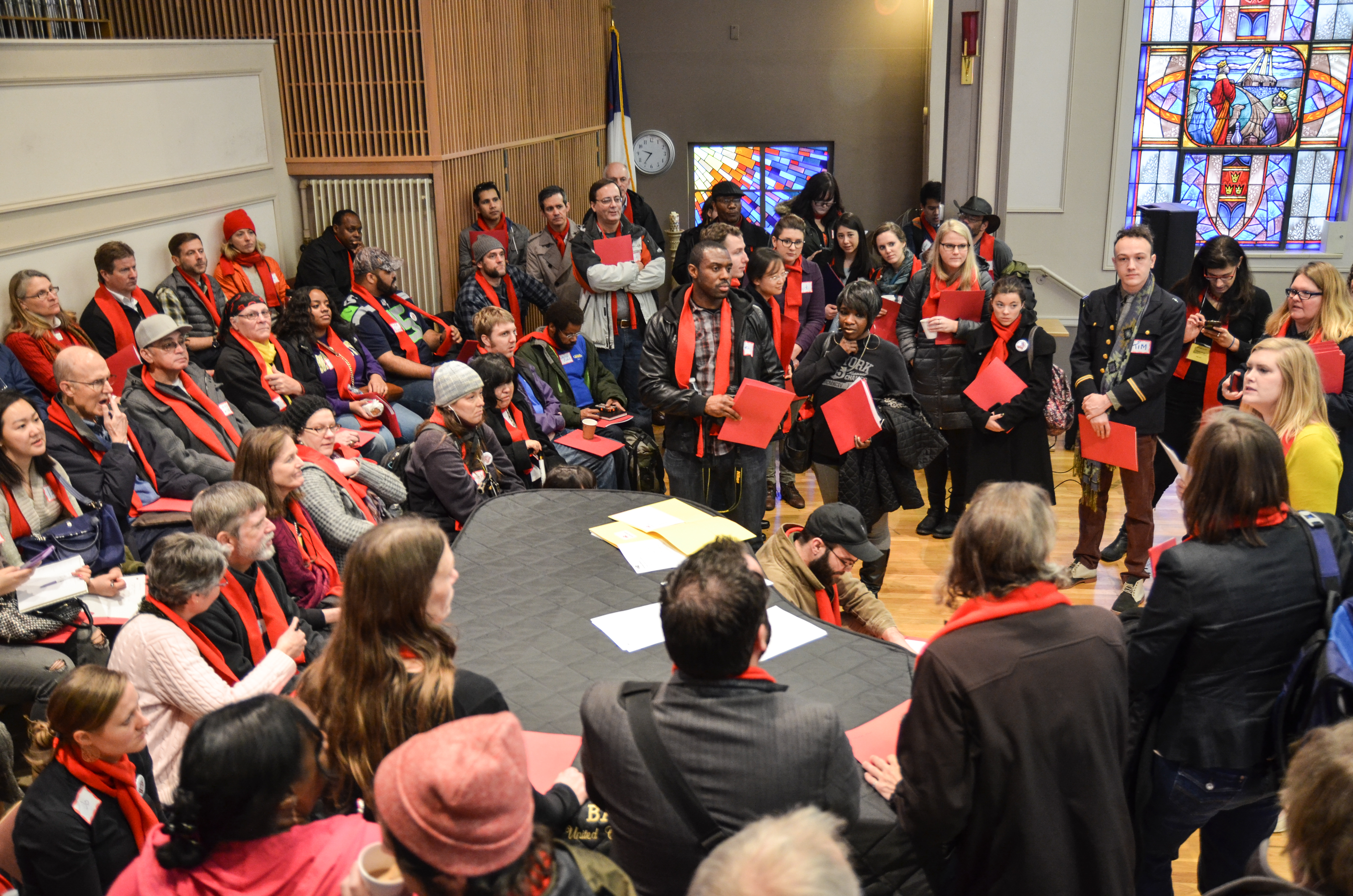Recent Blog Posts
Washington continues to be one of the states with the largest gap between the number of low-income renter households and the number of affordable and available rental homes to meet that need.
A new report by the Washington Low Income Housing Alliance and the National Low Income Housing Coalition (NLIHC) finds a national shortage of 7.3 million affordable and available rental homes for extremely low-income renter households – those with incomes at or below the poverty level or 30% of their area median income, whichever is greater – resulting in just 34 affordable and available rental homes for every 100 extremely low-income renter households nationwide. The report, The Gap: A Shortage of Affordable Homes, also reveals that there are 237,903 extremely low-income households in Washington but only 65,922 affordable rental homes available to them, leaving only 28 affordable and available rental homes for every 100 extremely low-income households in the state.
"Washington households continue to struggle to find affordable housing, and those who are fortunate enough to find housing often face ongoing issues of rent gouging," said Housing Alliance Executive Director Rachael Myers. "The Legislature failed to pass statewide rent stabilization this year, and they failed once again to create a permanent and sustainable funding source for the Housing Trust Fund in the form of the Affordable Homes Act. Our elected leaders need to do more to ensure that low-income renters have access to safe and affordable housing."

Released annually, The Gap investigates the severe shortage of affordable rental homes available to extremely low-income families and individuals nationwide and in every state and metro area. While rents have stabilized since the pandemic in most markets – and even declined to a small degree in some markets – the supply of affordable rental housing for extremely low-income households remains deeply inadequate nationwide and in Washington. In consequence, 75% of extremely low-income renters in Washington are severely housing cost-burdened, spending more than 50% of their income on housing, with little left over for food, healthcare, and other basic necessities.
The report also reveals that most rental markets provide an adequate supply of housing for middle-income renters but that no rental market provides enough homes for extremely low-income renters. Even in housing markets with shortages of affordable and available homes for middle-income renters, the cumulative shortage is largely attributable to the significant unmet housing needs of people with the lowest incomes, who must occupy higher-priced homes in the private market that would otherwise be available to higher-income renters.
“Even with a strong economy and stabilizing rents, homelessness has increased to its highest level ever recorded, and millions of the lowest-income and most marginalized households are at risk,” said NLIHC President and CEO Diane Yentel. “We know what works to end housing insecurity and homelessness – what we lack is the political will to invest in these solutions at the scale needed. More than ever, Congress should act quickly to enact bold legislation to ensure rental assistance is universally available, build and preserve homes affordable to people with the lowest incomes, create tools to prevent eviction and homelessness, and strengthen renter protections to keep renters stably housed.”
Learn more about The Gap by visiting: https://nlihc.org/gap
Access more data specific to Washington at: https://nlihc.org/gap/state/wa

For additional data, including for specific counties and cities across Washington, contact Rob Huff at robh@wliha.org


Add new comment